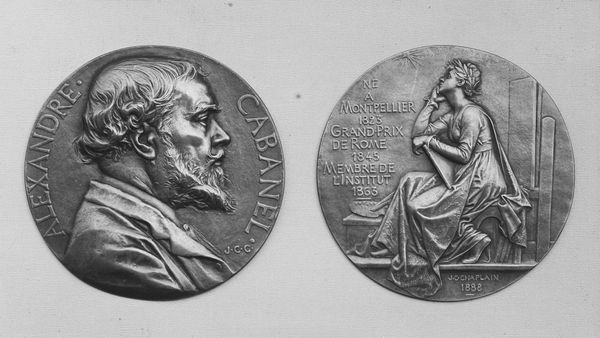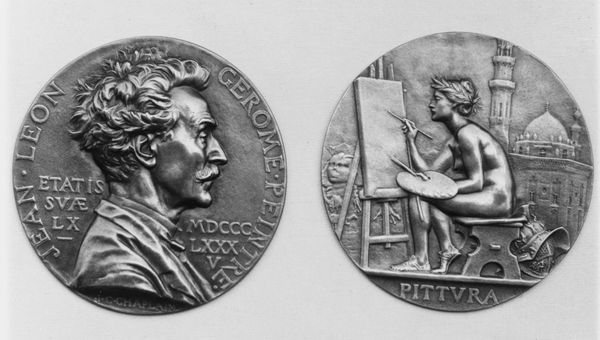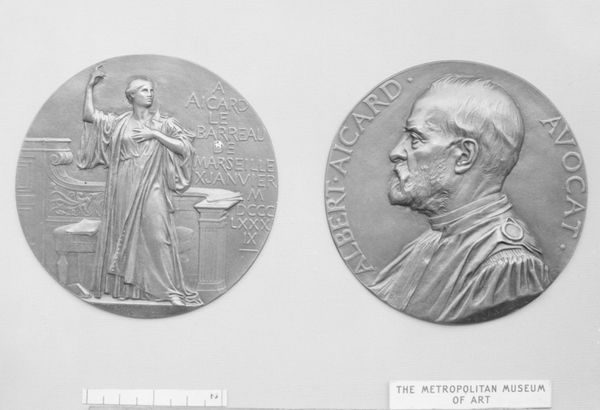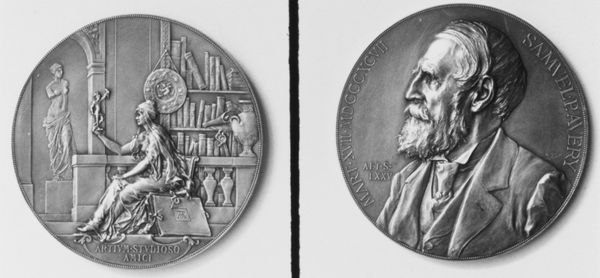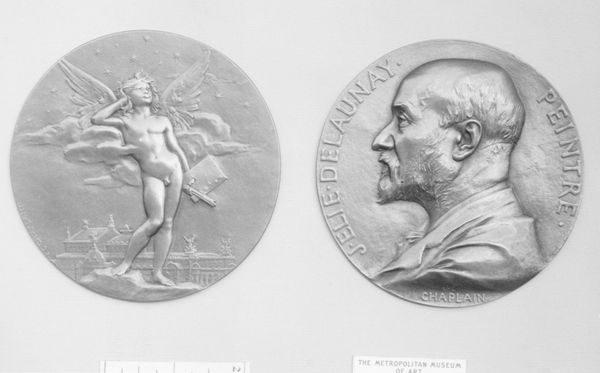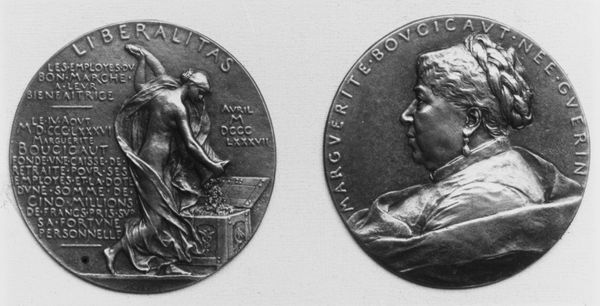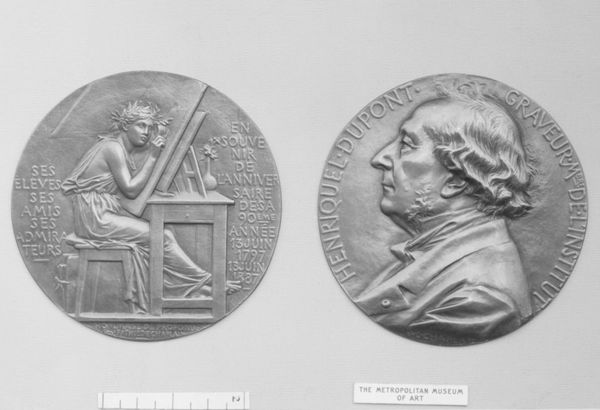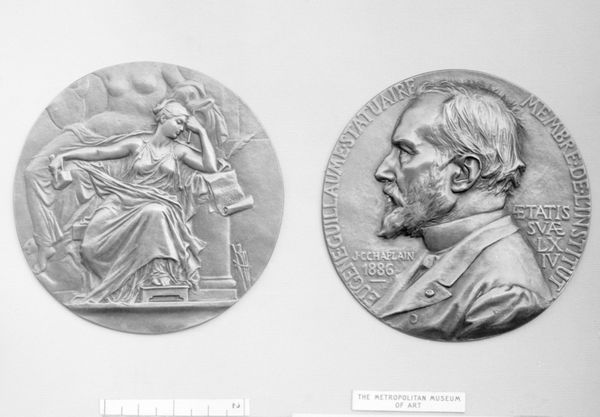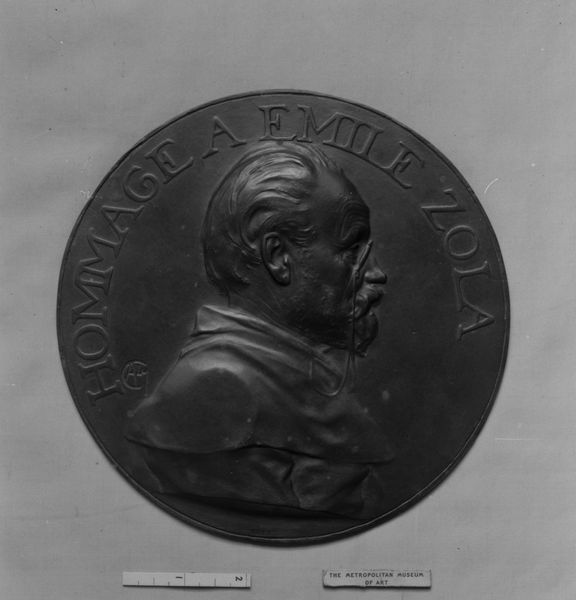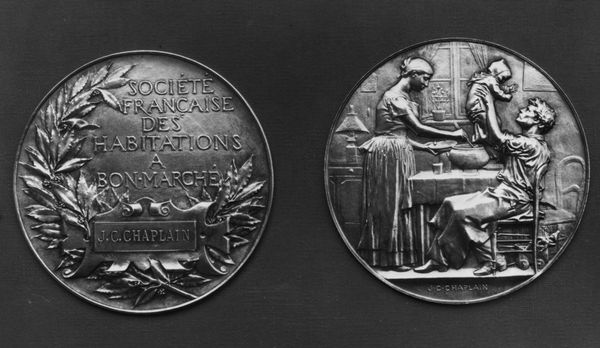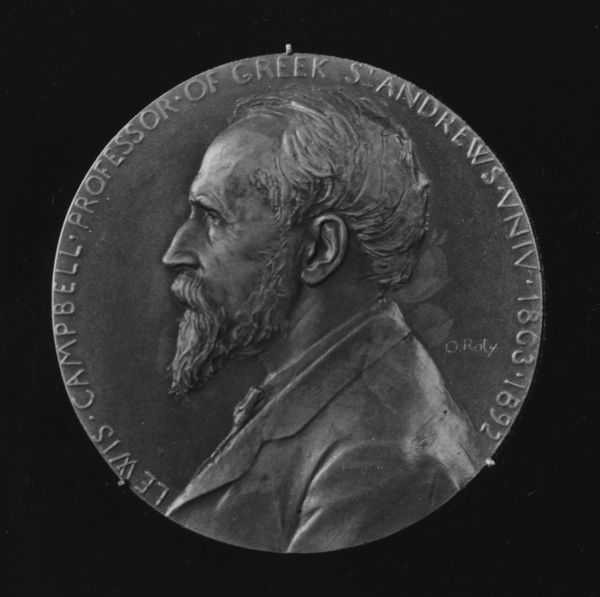
In Honor of Charles Gounod, the Composer 19th century
0:00
0:00
bronze, sculpture
#
portrait
#
medal
#
neoclacissism
#
sculpture
#
bronze
#
sculptural image
#
black and white theme
#
sculpture
#
black and white
#
men
#
history-painting
#
decorative-art
Dimensions: Diameter: 3 15/16 in. (10 cm)
Copyright: Public Domain
Editor: Standing before us is a bronze medal created in the 19th century by Jules-Clément Chaplain, entitled "In Honor of Charles Gounod, the Composer." The striking contrast and detail carved into the metal really make it pop. What do you notice first when you look at this piece? Curator: I am immediately struck by the bipartite division, its mirroring and contrasting forms which, through a series of careful compositional tactics, creates a pleasing balance. Observe, firstly, the incised inscription reading "CHARLES GOUNOD" which, set against the backdrop of the first medal form, establishes its function as identifying nomenclature. On the medal’s opposing side, we observe a similar deployment of an incised epigraph functioning as a summarizing gesture towards the body of Gounod's work. What, do you suppose, does this create for the viewer? Editor: A clear indication of what he composed, the scale and volume of work! It tells the story of the artist by speaking plainly about his portfolio. Curator: Precisely! And what effect do you suppose this clear demarcation has? Note, too, how Chaplain has structured the relation between the artist's bust, placed in profile, versus that of what is seemingly a Muse, arranged likewise. Observe that they, facing opposite directions, occupy symmetrical portions of the circular design field. Editor: It appears very formal, like a Roman coin. The symmetry emphasizes Gounod's achievements but the clean lines lack dynamism. Curator: It is an intentional staticity, befitting the Neoclassical revival of the period. Consider, however, that we have examples of medals dating back millennia and wonder how and why artists throughout time adapt their compositions for function and visual appeal. Editor: I never thought about medal-making that way before! Thinking about the history behind stylistic choices makes a lot more sense now. Curator: Indeed. Close looking is an essential skill that enables us to decode not only the visual components, but the intrinsic formal devices that speak to purpose and design.
Comments
No comments
Be the first to comment and join the conversation on the ultimate creative platform.
